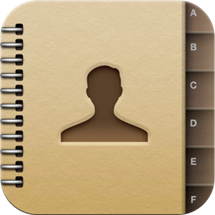
Spymobi
Spy Apps for Parents, Employers, Private InvestigatorsHow To Spy On Text Messages Without The Phone
Tuesday , 6, October 2015 admin iPhone Spy Leave a comment
How To Spy On A Phone Without Having The Phone
It probably isn’t surprising to everybody following smartphone trends that there is a considerable interest in how to spy on a phone without access; together with good options for spy on iPhone text messages.
WebWatcher Mobile
Monitor iOS iPhone or iPad – Nothing to Download and No Jailbreak
Downloading and installing an app isn’t absolutely necessary if you’re doing surveillance on an iPhone or iPad.
When you’re thinking of keeping tabs on of an iPhone or iPad, and you don’t need the complete full range of monitoring features, and you’ve got permission to access iCloud credentials of the target device, your most effective option is Webwatcher for iOS
The good news is that it is super easy to start all you need to do is log into your WebWatcher web account and register the Apple ID & Password of the device to monitor. With WebWatcher, there isn’t any software to download, and that means you don’t need to jailbreak the iPhone or iPad. WebWatcher will begin documenting activity whenever the device backs up to iCloud, normally once per day provided that iCloud credentials are valid and iCloud is properly enabled. Sign in to your WebWatcher account from any computer to see all recorded data in a user friendly online interface. View all activity including SMS, images, website history and call log history.
iPhone Spy from Webwatcher Capability

No Jailbreak Required. WebWatcher Mobile does not require you to “Jailbreak” the device. Be cautious of alternatives that require you to “Jailbreak” your iPhone or iPad (complicated and voids your warranty).

Undetectable and Tamper Proof
WebWatcher Mobile is undetectable and therefore cannot be tampered with or deleted by kids or employees. It does not appear on the iPhone or iPad as an app. iPhone Spy from Webwatcher can’t be interfered with as along as iCloud is enabled and credentials do not change.

Monitor From Anywhere
Webwatcher Mobile transmits all recorded data to a secure internet account. Simply log in from any internet-connected computer to look at recorded activity. If you are also monitoring additional smartphones, you can use the same interface. It is designed for multiple devices.

SMS Text Messages. Look at all SMS Text Messages and iMessages on an iPhone or iPad, including deleted messages as long as they are deleted after the last iCloud backup.

Photo Recording. Check photos taken and saved to the camera roll on an iPhone or iPad.

Website History. View all Websites Visited and Website Searches via Safari on an iPhone, iPad or iPod Touch. Web browsing is no longer an unknown on an iPhone, iPad or iPod Touch.

WhatsApp. View chats that take place through WhatsApp. WhatsApp is no longer an unkown with WebWatcher!

Contacts – coming soon. View contacts saved on an iOS device (iPhone/iPad).

Calendar – coming soon. Look at scheduled appointments saved to the calendar on an iOS device (iPhone/iPad).

Call Log History. Conveniently keep tabs on when calls are made, received, and missed by the iPhone. See call duration, time of call, and phone numbers.

Alert Word Notifications. Be notified right away when any alert word (selected by you) is sent or received in an SMS Text Message.

Alert Word Highlights. Easy to find where alert words are in logged activity, they will be highlighted across all recorded data types. For example, if the word “skip school” appears in an email, you will see it highlighted in yellow in the body of that email.

What is Jailbreaking?
Jailbreaking is the act of altering the iPhone software to remove any limitations set by Apple. The primary limitation is that apps can only be installed from the App Store. With a jailbroken phone you can install applications from other sources.
Jailbreaking an iPhone is not the same thing as iPhone unlocking. iPhones are typically purchased together with an agreement locking it to a specific cellular network.
iPhone Jailbreaking has a Downside
There are plenty of justifications for iPhone jailbreaking; but it does have some consequences.
Anytime Apple updates its operating system, those who jailbreak the device are left out in the cold. As soon as the user plugs their jailbroken iPhone into their computer to download new software, Apple closes the operating system and installs the new update. That means that if a user wants a new version of Apple’s software, but still wants to maintain all the jailbroken features, they’re out of luck. Apple doesn’t want users to jailbreak its smartphones. And it does everything it can with each new update to stop that. So, if an update is really important to a user, it’s probably best not to jailbreak the smartphone in the first place.
If you’re going to jailbreak your iPhone, do your future self the very big favor of changing its password. Cydia’s home screen provides a Root Password How-To button. Tap it to learn how to change the device’s password.
Your battery life could suffer: Some third-party apps and processes care very little about how much power they pull from your iOS device. If you’re running some of these things on your iPhone, iPod touch, or iPad, your battery could drain in short order.
Your phone could become less stable: Say what you will about the sometimes-quirky nature of the App Store’s approval process, at least apps have been vetted-hopefully to the point where they shouldn’t take down the entire device when they crash. There’s no guarantee that apps offered via Cydia will be as stable.